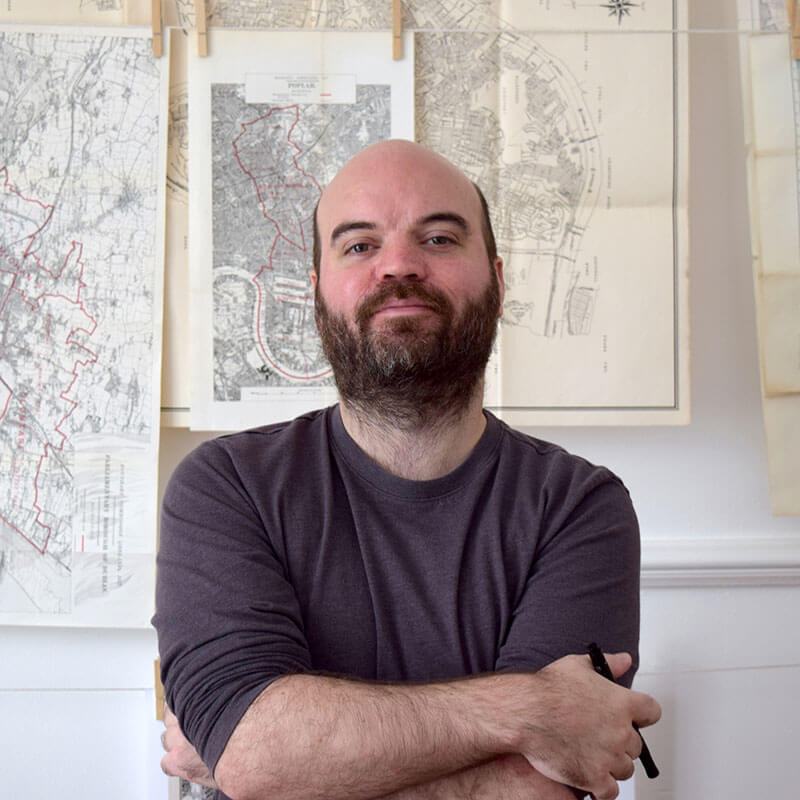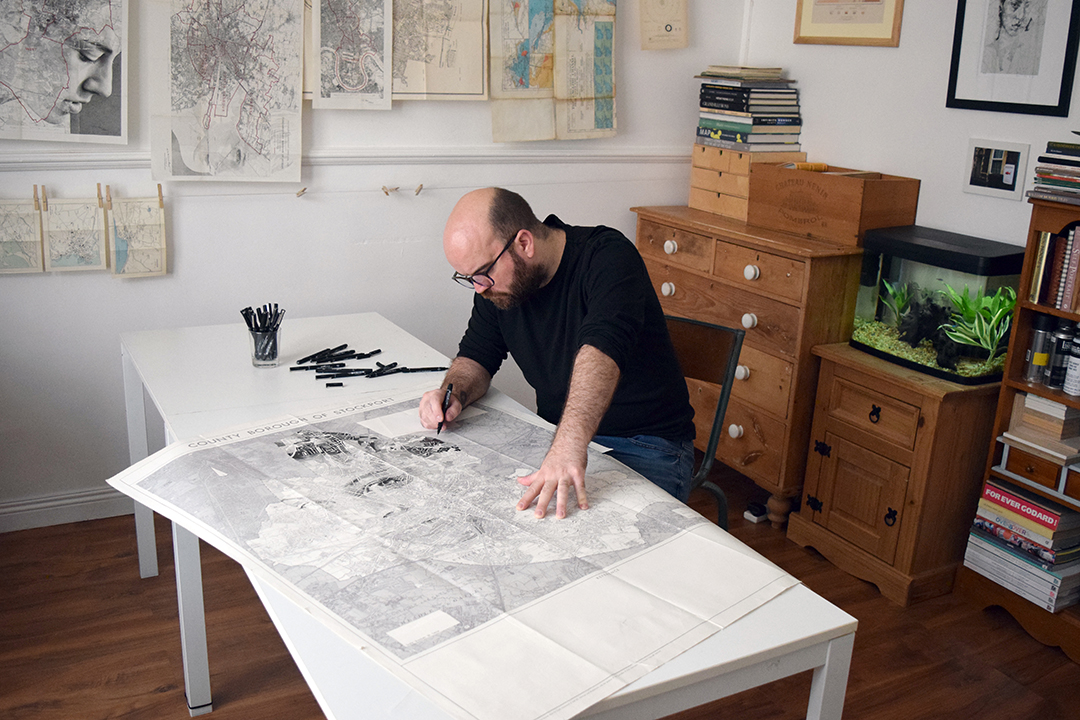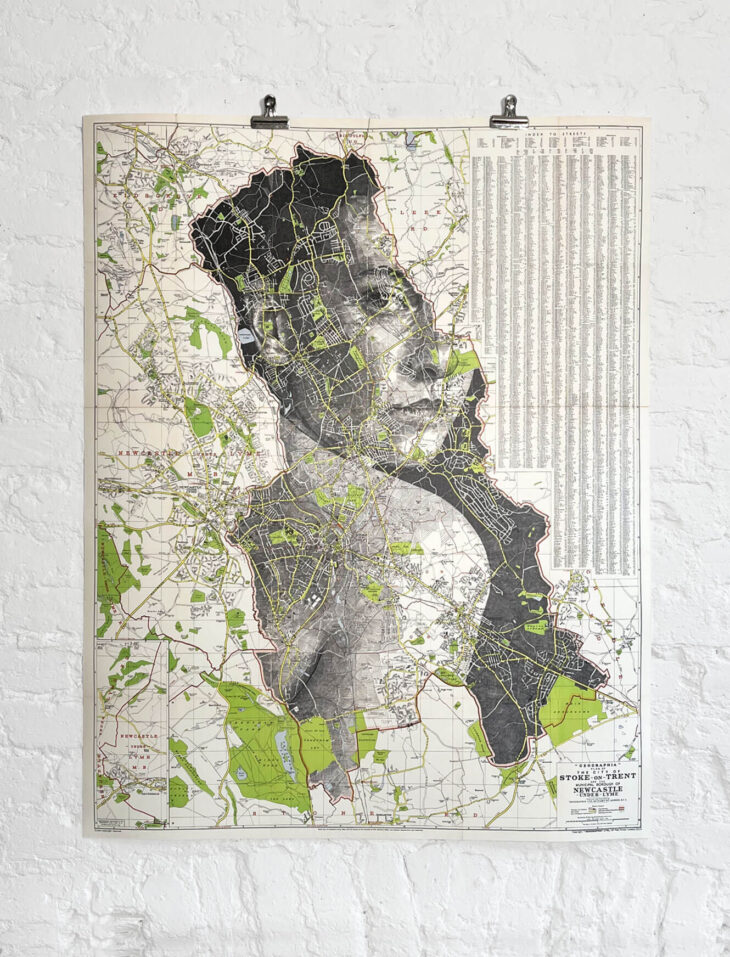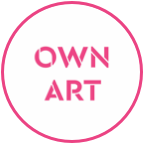Fairburn manipulates paper maps to construct other forms, usually portraiture, calling this process topopointillism; a direct combination of topography and pointillism.
Using traditional materials such as ink, paint and pencil, the artist makes gradual changes to the contours, roads and other patterns found in cartography. These changes allow him to tease out the human form, resulting in a comfortable coexistence of figure and landscape. Fairburn aim to preserve the functionality of each map by feeding the composition instead of fighting it – often spending hours studying the terrain before he begins any of the physical processes.
Fairburn is interested in the degree of subtlety behind each synchronisation, and the way in which a completed map behaves more like a portrait when viewed from further away – it’s almost paradoxical that a portrait should lose detail when examined closely.




